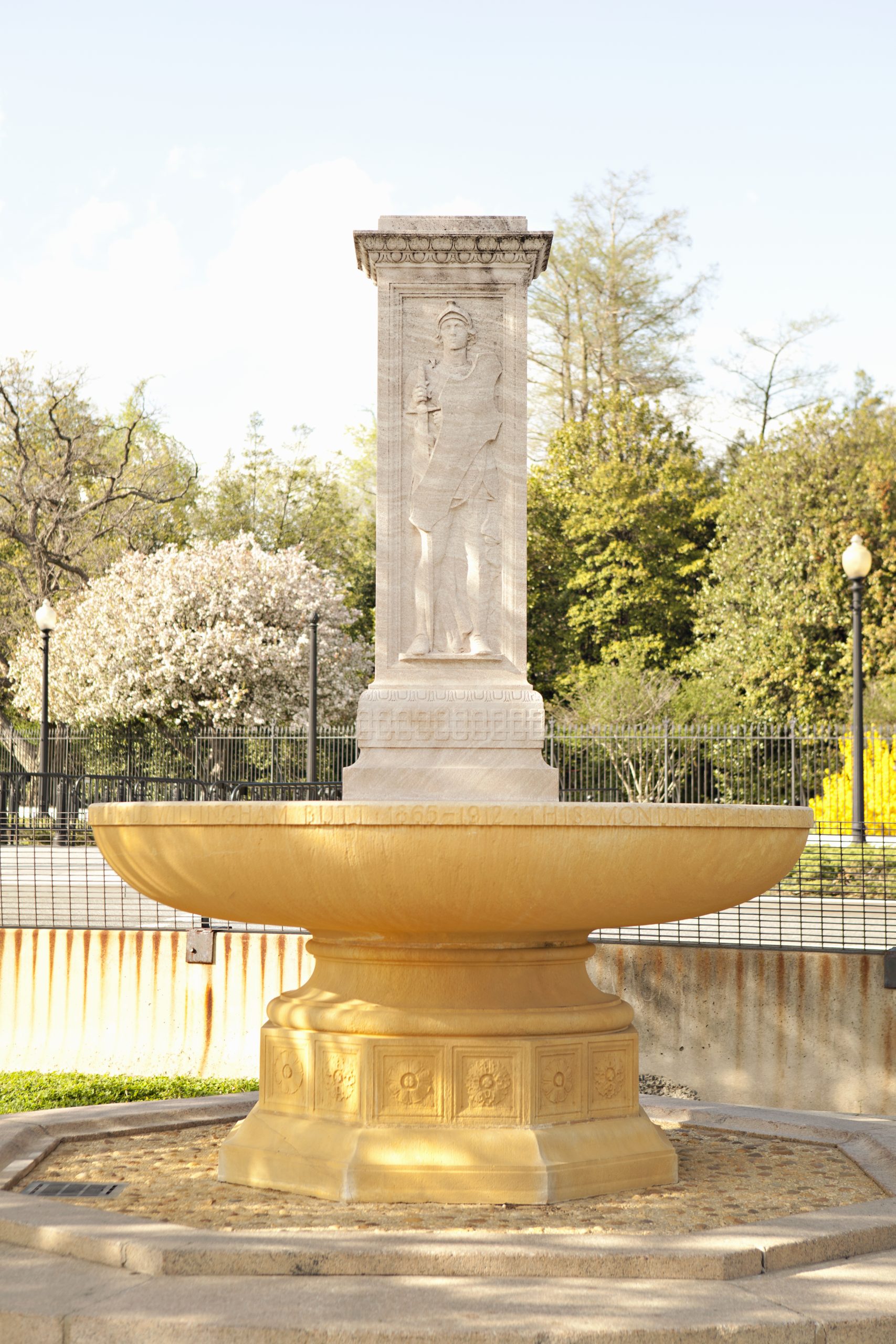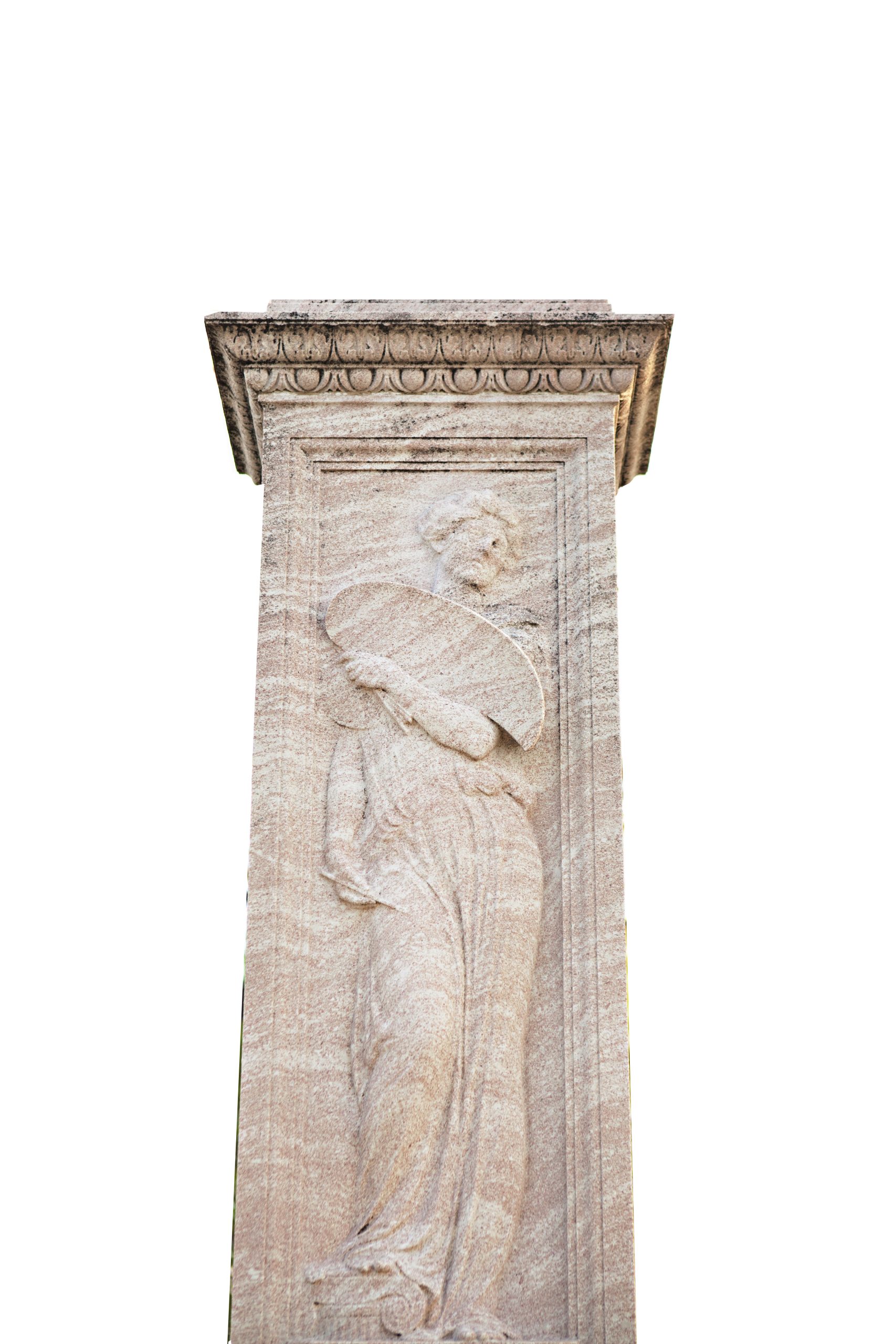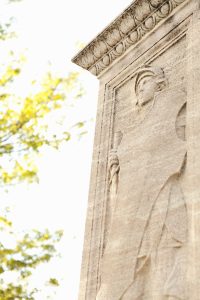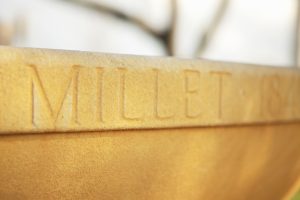

Millet-Butt Memorial Fountain
Date: 1912
Dimensions: 12 feet tall by 8 feet wide
Medium: Granite and Marble
Owner/Location: Ellipse, Presidents Park, Washington, DC. Photos courtesy, Karyn Millet Photography.
Description


On April 15, 1912 Francis Davis Millet and Major Archibald Butt died aboard the Titanic. Both men, were returning to the United States at the request of President Taft. Millet was the vice-chair of the US Commission of Fine Arts, which was in the process of finalizing the plans for the Washington Mall and the Lincoln Memorial. Major Butt who had been the personal assistant to President Teddy Roosevelt, had been asked to remain as the personal assistant to President Taft. Historical accounts show that president Taft leaned heavily upon Butt to run the White House and ultimately became close friends. President Taft was also a friend of Millet’s having enlisted his leadership, to chair the Niagara Falls Preservation Commission, and then co-chair the newly created Commission of Fine Arts, with Daniel Burnham. Deeply affected by the death of both men, President Taft volunteered to become the chairman of the fundraising committee whose purpose was to build a memorial to both men.
May 16, 1912, Senator Bacon of Georgia submitted a resolution in the U.S. Senate authorizing a memorial to Butt and Millet on federally owned land somewhere in the District of Columbia. Plans for erecting a memorial to Butt and Millet began shortly after the introduction of the Senate resolution. Members of the foreign diplomatic corps and several high government officials had already donated several thousand dollars to the memorial fund by mid-May. Taft himself had made the first contribution.
The memorial became the first such memorial of its kind on the Ellipse, which is the southern part of President’s Park, just south of the White House and on the edge of the Mall.
The memorial commission had also engaged Thomas Hastings and Daniel Chester French as the memorial’s designers. Both men donated their time, French was a very close friend of Millet’s having sculpted the statue of “The Republic” for the 1893 Columbian Exposition in Chicago, and had been selected by Millet and the Commission of Fine Arts to sculpt Lincoln for that new memorial.
The design of the monument was to be a water fountain, including a column with two bas-relief figures—one representing chivalry for Butt, and one representing art, for Millet. Supporting the column was a basin that caught the water flowing over its edge into a pool below. The overall height of the memorial was about 12’ tall. Its octagonal grey granite base supports the 8 foot wide bowl of golden brown Tennessee marble. The grey granite neoclassical column rises from the center of the bowl. Two figures in low bas-relief are depicted, one on the north and one on the south side of the column. The northern figure of a woman with paint brush and palette, represents the fine arts. The southern figure of a man in armor and helmet, holding a shield, represents military valor, representing Butt’s distinguished career in the military. Four globes in the bowl surround the granite column and emit water, which cascades over the edge of the bowl into a shallow receptacle in the grey granite base. Hastings and Daniel Chester French acknowledging the disposition of both men to always be of service designed the fountain bowl to be a source of drinking water for the horses used by park police patrols.
The inscription around the lip of the bowl reads: “In memory of Francis Davis Millet – 1846–1912 – and Archibald Willingham Butt – 1865–1912. This monument has been erected by their friends with the sanction of Congress.”
